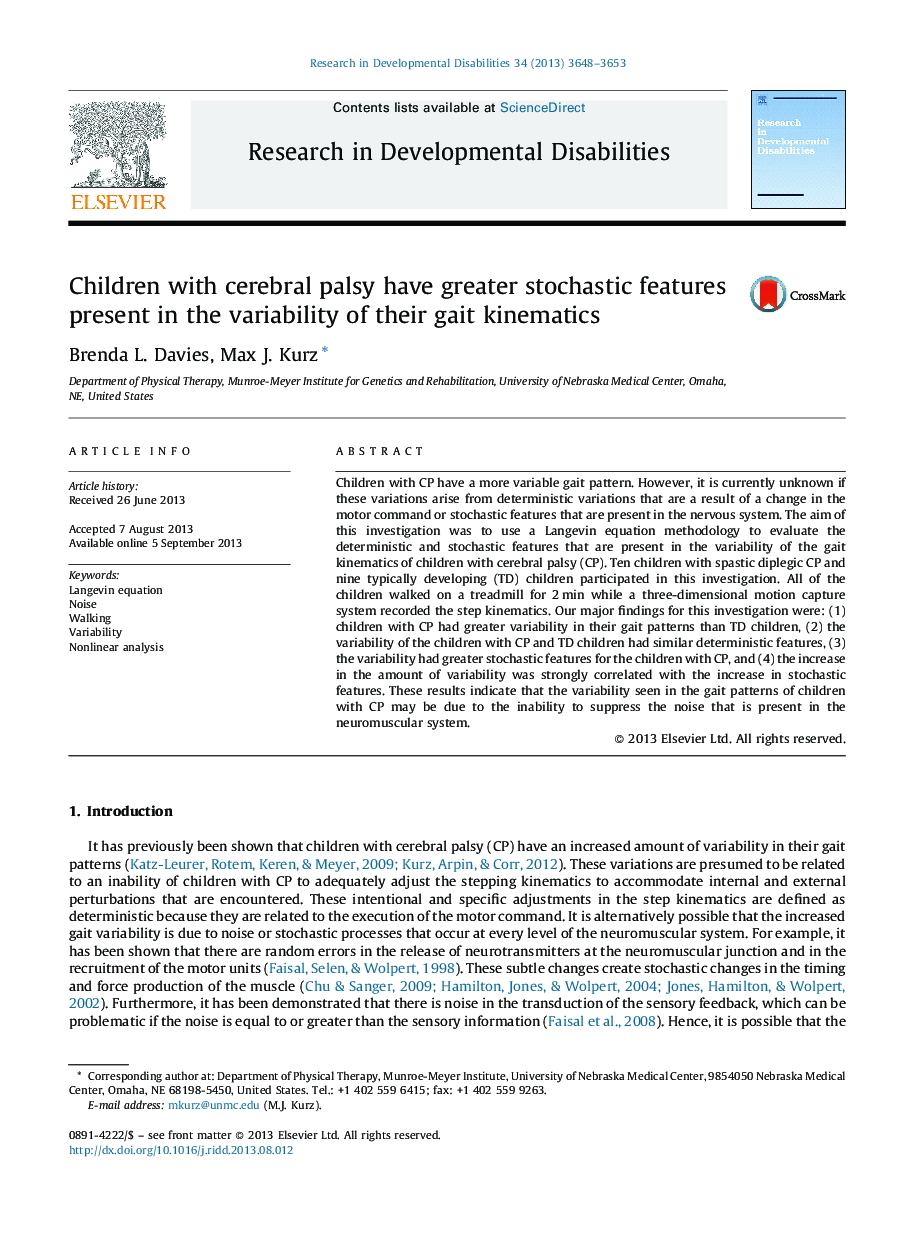| Article ID | Journal | Published Year | Pages | File Type |
|---|---|---|---|---|
| 10317608 | Research in Developmental Disabilities | 2013 | 6 Pages |
Abstract
Children with CP have a more variable gait pattern. However, it is currently unknown if these variations arise from deterministic variations that are a result of a change in the motor command or stochastic features that are present in the nervous system. The aim of this investigation was to use a Langevin equation methodology to evaluate the deterministic and stochastic features that are present in the variability of the gait kinematics of children with cerebral palsy (CP). Ten children with spastic diplegic CP and nine typically developing (TD) children participated in this investigation. All of the children walked on a treadmill for 2Â min while a three-dimensional motion capture system recorded the step kinematics. Our major findings for this investigation were: (1) children with CP had greater variability in their gait patterns than TD children, (2) the variability of the children with CP and TD children had similar deterministic features, (3) the variability had greater stochastic features for the children with CP, and (4) the increase in the amount of variability was strongly correlated with the increase in stochastic features. These results indicate that the variability seen in the gait patterns of children with CP may be due to the inability to suppress the noise that is present in the neuromuscular system.
Related Topics
Life Sciences
Neuroscience
Behavioral Neuroscience
Authors
Brenda L. Davies, Max J. Kurz,
